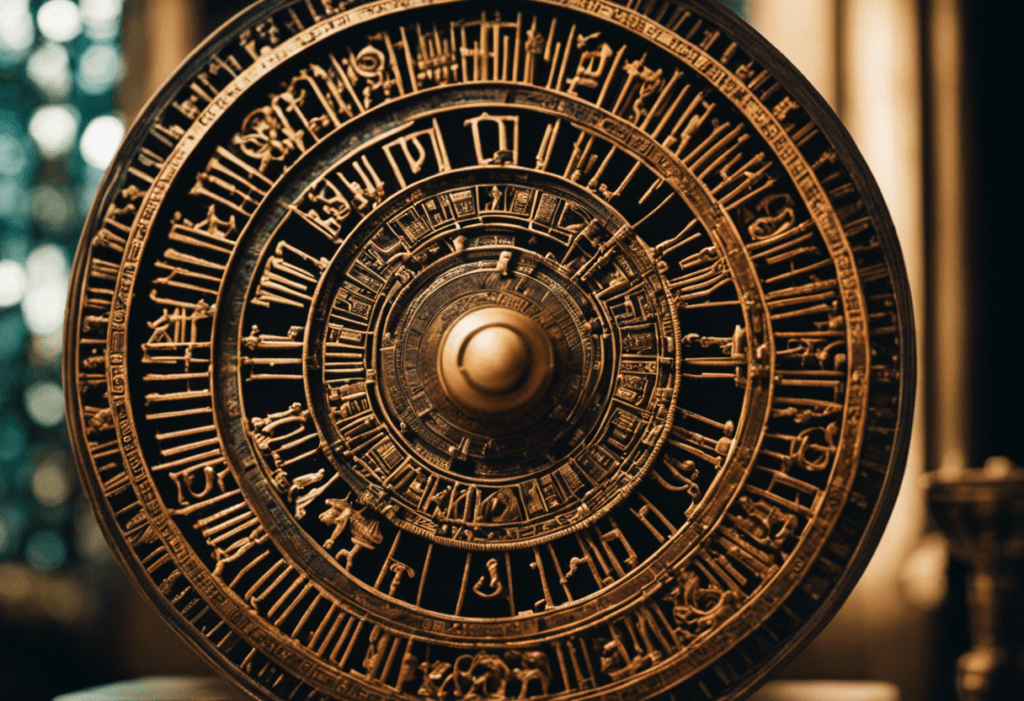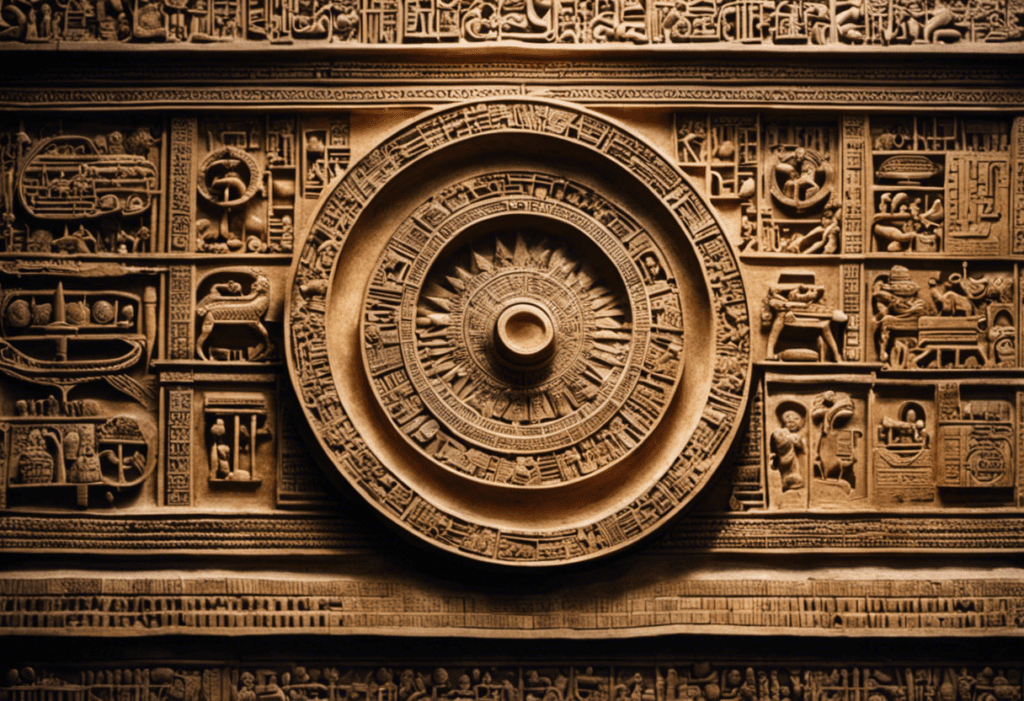The Babylonian calendar, a remarkable system of timekeeping, offers a fascinating glimpse into the ancient civilization’s organization and understanding of time.
By dividing the year into months, weeks, and days, the Babylonians established a structured and practical method for tracking time.
This article explores the intricate details of the Babylonian calendar, delving into its religious observances, agricultural significance, and the daily rhythm from dawn to dusk.
Through an evidence-based analysis, we unravel the complexities of this ancient calendar system, shedding light on its enduring legacy.
Key Takeaways
- The Babylonian calendar organized a year into twelve months.
- Each month began at the first sighting of the new moon.
- The Babylonian week consisted of five days, each associated with a specific deity.
- Daily rituals were performed to honor deities associated with each hour, with specific rituals performed at sunrise, mid-morning, and sunset.
The Babylonian Calendar: a Year Divided Into Months
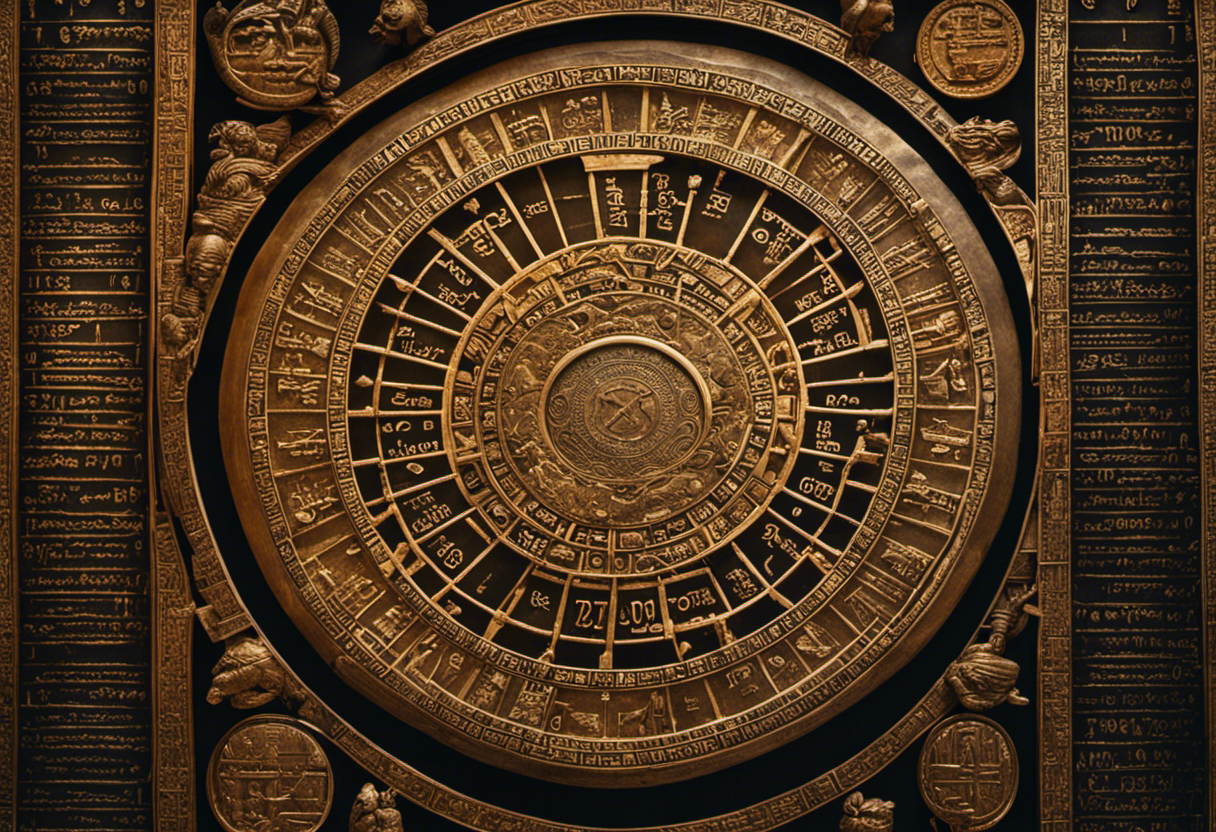

The Babylonian calendar system organizes a year into twelve months, each with its own distinct characteristics and cultural significance. This ancient calendar was primarily lunar-based, with each month beginning at the first sighting of the new moon. The lunar phases played a crucial role in determining the start and end of each month.
The Babylonians also incorporated the concept of zodiac signs into their calendar. These signs represented specific constellations that were visible in the night sky during different months of the year. Each zodiac sign had its own unique symbolism and was associated with various celestial events and natural phenomena. For example, the zodiac sign of Aries represented the beginning of spring, while the sign of Leo was associated with the scorching heat of summer.
The Babylonian calendar was not only a means of tracking time but also held great cultural significance. It played a vital role in religious rituals and ceremonies, as well as in agricultural practices. The Babylonians believed that the alignment of the lunar phases and zodiac signs influenced various aspects of their lives, including agriculture, weather patterns, and the success of military campaigns.
Tracking Time: The Babylonian Week
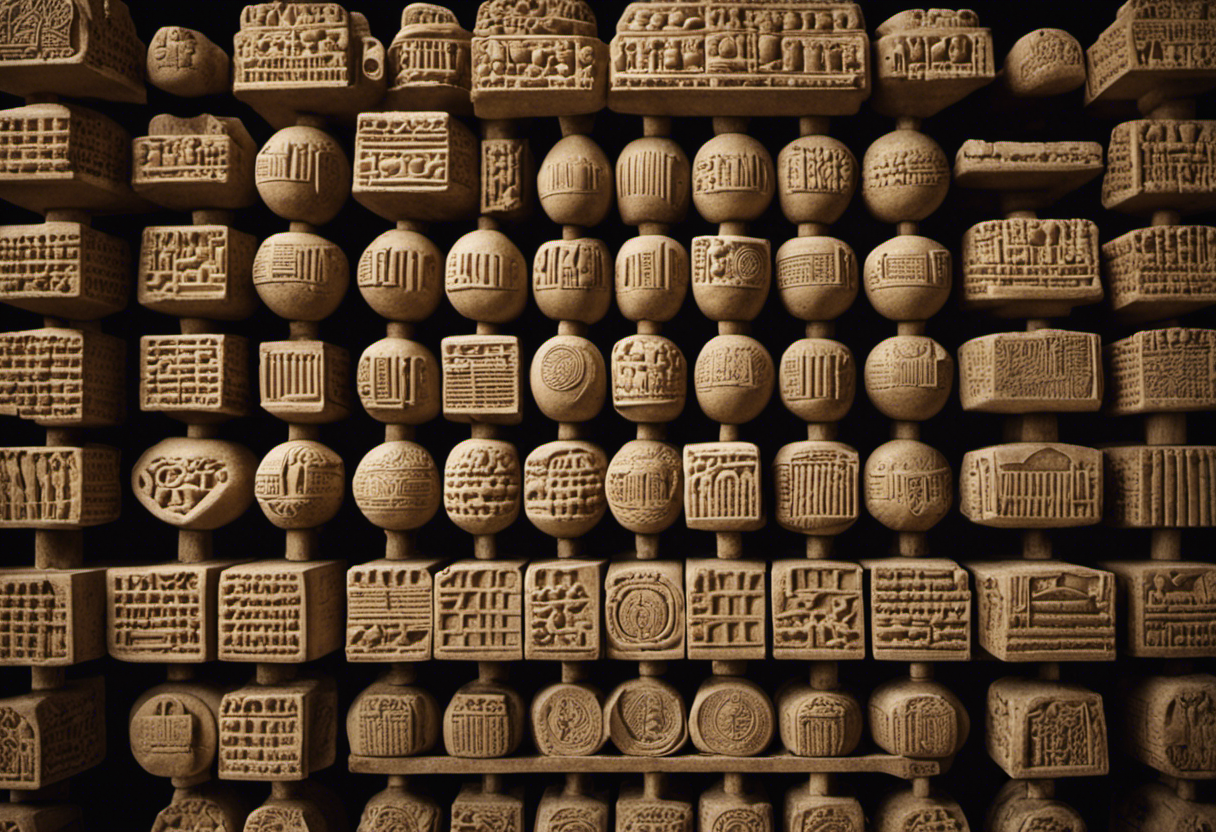

Five days made up the Babylonian week, with each day being associated with a specific deity and having its own unique religious significance.
The origin of the Babylonian week can be traced back to ancient Mesopotamia, where the Babylonians developed a complex calendar system based on their observations of the stars and celestial bodies.
The significance of the Babylonian week lies in its connection to religious practices and beliefs. Each day of the week was dedicated to a particular deity, and the activities and rituals performed on these days were believed to have a direct impact on the favor and protection of the associated deity.
For example, the first day of the week was dedicated to the god Anu, the second day to the god Enlil, the third day to the god Ea, the fourth day to the goddess Ishtar, and the fifth day to the god Marduk. The Babylonians believed that by observing the proper rituals and activities on each day, they could ensure the blessings and protection of these deities, which were essential for their well-being and prosperity.
Overall, the Babylonian week had deep religious significance and played a crucial role in the daily lives of the Babylonians.
The Babylonian Day: From Dawn to Dusk
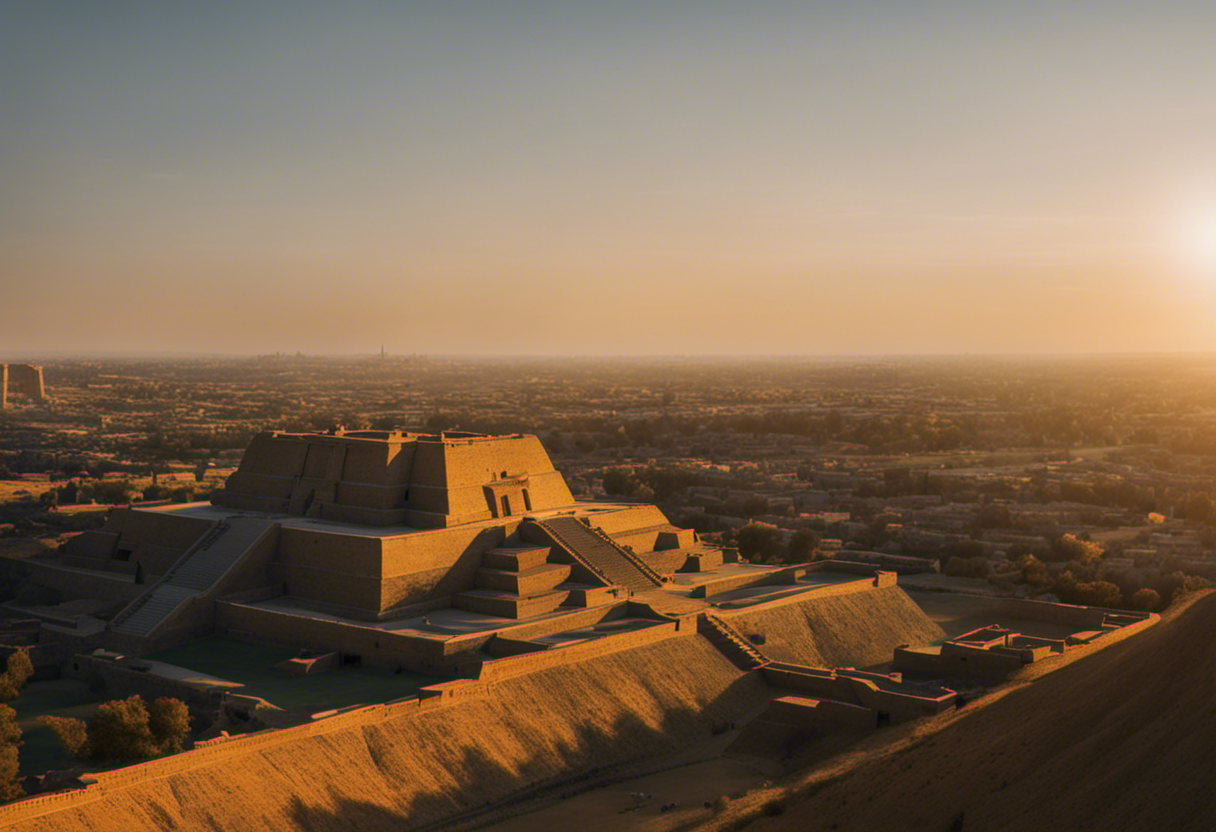

Throughout the Babylonian day, from dawn to dusk, various religious rituals and activities were performed to honor and seek the favor of the deities associated with each hour, demonstrating the intricate connection between time and religious practices in Babylonian culture.
The Babylonians believed that time was a powerful force, and they sought to align themselves with the divine through their daily rituals. These rituals were carefully structured and performed at specific times of the day, each dedicated to a specific deity.
Here are four examples of the daily rituals performed by the Babylonians:
-
At sunrise, the Babylonians would offer prayers and sacrifices to the deity associated with the rising sun. This ritual was believed to bring blessings and protection for the day ahead.
-
Mid-morning, they would perform rituals to honor the deity associated with agriculture and fertility. These rituals were meant to ensure a bountiful harvest and the prosperity of their land.
-
During the afternoon, the Babylonians would engage in rituals dedicated to the deity associated with wisdom and knowledge. These rituals were performed to seek guidance and enlightenment in matters of importance.
-
At sunset, the Babylonians would perform rituals to honor the deity associated with the setting sun. This ritual was believed to bring peace and protection during the night.
These daily rituals were an integral part of Babylonian life, reflecting their deep spiritual beliefs and their understanding of the connection between time and the divine.
Festivals and Religious Observances in the Babylonian Calendar


Various festivals and religious observances were carried out in accordance with the Babylonian calendar, marking significant moments of reverence and celebration throughout the year. These religious ceremonies played a crucial role in the cultural traditions of the Babylonians, providing them with a sense of identity, community, and spiritual connection.
One of the most important festivals in the Babylonian calendar was the Akitu festival, which celebrated the new year. This festival lasted for 11 days and included various rituals and religious ceremonies. It was a time of renewal and purification, during which the Babylonians sought the blessings of their gods for a prosperous year ahead.
Another significant festival was the Zagmuku festival, which was held in honor of the god Marduk. This festival lasted for 12 days and was marked by elaborate processions, music, dance, and feasting. It was a time of joy and thanksgiving, as the Babylonians expressed their gratitude to their gods for their blessings and protection.
In addition to these major festivals, the Babylonian calendar also included numerous other religious observances throughout the year. These observances were dedicated to various gods and goddesses and were marked by prayers, offerings, and rituals. They served as reminders of the Babylonians’ religious beliefs and their commitment to their gods.
Overall, the festivals and religious observances in the Babylonian calendar were an integral part of the Babylonian culture. They provided a framework for communal worship, strengthened social bonds, and reaffirmed the religious beliefs and values of the Babylonian people.
The Babylonian Calendar and Agriculture: Seasonal Cycles


One important aspect of the Babylonian calendar is its close connection to agricultural practices, as the seasonal cycles dictated the timing of crucial farming activities. The Babylonians were highly skilled in understanding the natural world and developed sophisticated farming techniques to maximize their crop yields. The calendar played a crucial role in guiding these practices, allowing farmers to plan and execute their activities at the most opportune times.
Here are four examples of how the Babylonian calendar influenced agricultural practices:
-
Planting: The calendar provided information about the optimal time to sow seeds and plant crops. By aligning their planting schedule with the seasonal cycles, Babylonian farmers could ensure that their crops had the best chance of successful growth.
-
Harvesting: The calendar also indicated when crops were ready to be harvested. This allowed farmers to plan their labor and resources accordingly, ensuring a timely and efficient harvest.
-
Irrigation: The Babylonians were skilled in managing water resources for irrigation. The calendar helped them determine when to open and close irrigation channels, ensuring that crops received adequate water at the right times.
-
Crop Rotation: The Babylonians practiced crop rotation to maintain soil fertility. The calendar guided them in rotating their crops in accordance with the seasons, maximizing the effectiveness of this technique.
Overall, the Babylonian calendar played a vital role in the success of agricultural practices by aligning farming activities with the seasonal cycles and ensuring optimal conditions for crop growth.
Conclusion
In conclusion, the Babylonian calendar was a meticulously structured system that divided the year into months, tracked time through a seven-day week, and measured each day from dawn to dusk.
This calendar not only served practical purposes but also played a significant role in religious observances and agricultural cycles.
Like the intricate gears of a well-oiled machine, the Babylonian calendar ensured the smooth flow of time, marking the passage of seasons and guiding the rhythm of daily life.

